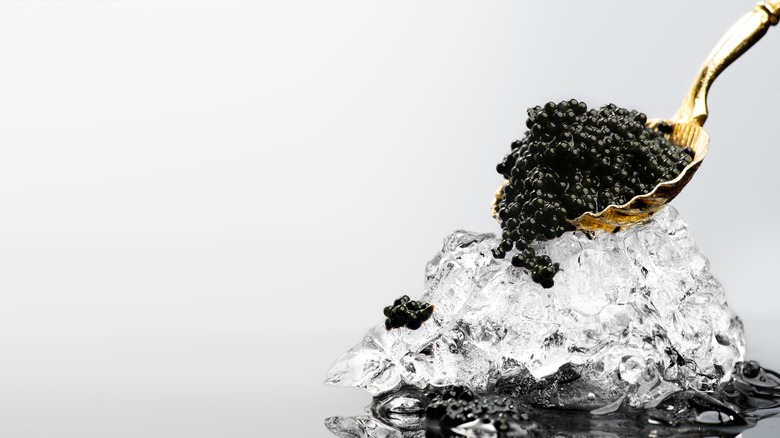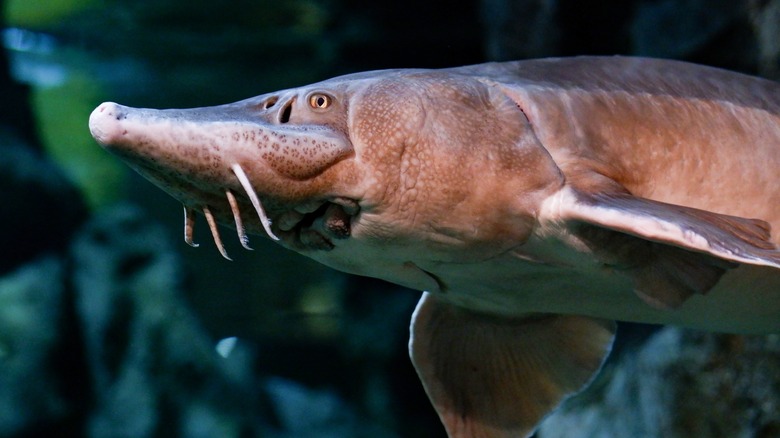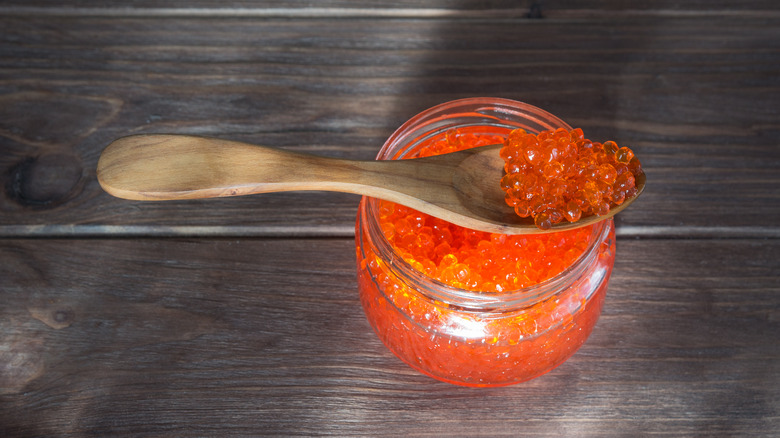Why Caviar Isn't Considered Vegetarian
No food epitomizes luxury more than caviar. Its name lives side-by-side with champagne in countless song lyrics, espousing the finer things in life. For many, caviar is a culinary bucket list item, something you have to try once, just for the sake of the hype, but if you're a vegetarian, you had better steer clear of it.
This might come as a surprise. Caviar is, after all, made from the eggs of a fish, specifically a sturgeon, and eggs are generally considered okay for vegetarians to eat because, as long as they have not been fertilized, they do not contain any actual animal flesh. Caviar, however, is not vegetarian. No, the eggs do not contain fish embryos as caviar is specifically made from unfertilized eggs, just like the eggs we eat from birds. There's a key difference when it comes to caviar though. To harvest caviar, the fish is first killed and dissected, which means that these eggs are not vegetarian.
How we get caviar
Caviar is the unfertilized roe (fish eggs) of fish in the Acipenseridae family, commonly known as sturgeons. Most sturgeon species live in oceans, but migrate up rivers when it comes time to spawn. As each female sturgeon prepares to spawn, their ovaries (also known as egg sacs) fill with eggs, and a single fish can carry millions of eggs at once. To harvest caviar, the fish must first be caught, and being pulled from the water typically kills them. After that, the fish's abdomen is sliced open, and the egg sacs are removed.
The caviar-harvesting process doesn't only make these eggs unfit for vegetarians; it also has a serious impact on the environment. The World Wildlife Fund calls sturgeons "the most endangered species group on earth" due to a combination of overfishing for caviar and damage to their natural habitats.
Harvesting caviar without killing the sturgeon is technically possible, but this method is rare. In 2014, the Los Angeles Times reported on a German scientist who devised a particular type of massage for egg-bearing sturgeons. By giving the fish a signaling protein to induce labor and gently massaging its belly, the roe can be forced out, and this also allows one fish to yield multiple batches of caviar. However, the result has a much softer texture than traditionally harvested caviar and is even more expensive. Fortunately, there are other alternatives.
Imitation caviar is a vegetarian alternative
In recent years, imitation caviar made from kelp (known as kelp caviar or seaweed caviar) has been steadily gaining popularity as an alternative for vegetarians, environmentally-conscious diners, and those who simply wish to enjoy the caviar experience without forking over the exorbitant sums typically associated with the traditional stuff. Making imitation caviar out of kelp and other forms of seaweed is a natural choice because these plants do a good job of emulating the briny, fishy taste of real fish roe.
To make kelp caviar, the kelp must first be dried so that it can then be ground into a fine powder. Manufacturers mix this powder with a few other ingredients, typically including salt and citric acid, and add it to a pot of water. This cooks slowly until it turns into a thick gel, which gets turned into small, spherical droplets by forcing it through a spray nozzle before they drop into a coagulation solution. Then, you're left with smooth gelatin spheres that look indistinguishable from real fish roe. The taste is not the same as authentic caviar, but it's impressively close, and it's 100% vegetarian and vegan.


